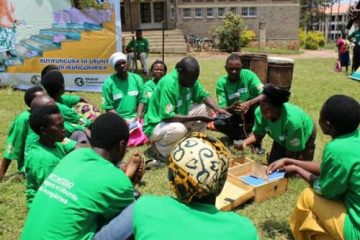During the trial of Laurent Bucyibaruta, former prefect of Gikongoro, a witness testified that the presence of local authorities at the sites of killings during the 1994 Genocide against the Tutsi emboldened the population to participate in the massacres.
Innocent Bakundukize, who served as an agronomist at the Mata tea plant during the genocide before being appointed bourgmestre of Mubuga Commune following the death of Charles Nyiridandi, testified before the Paris Assize Court. He stated that the attackers at Kibeho Parish felt encouraged by the presence of local leaders, including bourgmestres Charles Nyiridandi and Jean Hategekimana, the bourgmestre of Rwamiko, Silas Mugerangabo, and Damien Biniga, the sous-préfet of Munini.
“Certainly, the presence of all these authorities encouraged the population in their actions and gave them a sense of impunity,” Bakundukize added.
The Church Was No Exception
A survivor from Marie-Merci School in Kibeho recounted that the massacres occurred while the church and school administrations looked on.
“The school director, Emmanuel, told us there was a mass for us. Interahamwe militia members came, leaving their machetes at the church entrance. We were told there weren’t enough Eucharist hosts because the ‘cockroaches’ (a derogatory term for Tutsi) had consumed them all. Only those ‘at work’ (the killers) would receive it,” the witness said.
The witness also recalled the arrival of gendarmes in a car from the prefecture, accompanied by various authorities, including Damien Biniga (sous-préfet), Laurent Bucyibaruta (prefect of Gikongoro), the mayor of Mubuga, a local health assistant, and Bishop Misago.
“It was a large group. They assured us that we would be protected by the gendarmes, but we knew what kind of ‘security’ they meant,” the witness added.
The Attacks at Kibeho Parish
According to witnesses, there were three attacks at Kibeho Parish. No one died in the first attack, but the second and third attacks followed a similar pattern: gunfire was used first, followed by traditional weapons. The Kibeho Genocide Memorial now holds the remains of 28,937 victims who were killed at the parish and in neighboring sectors.








